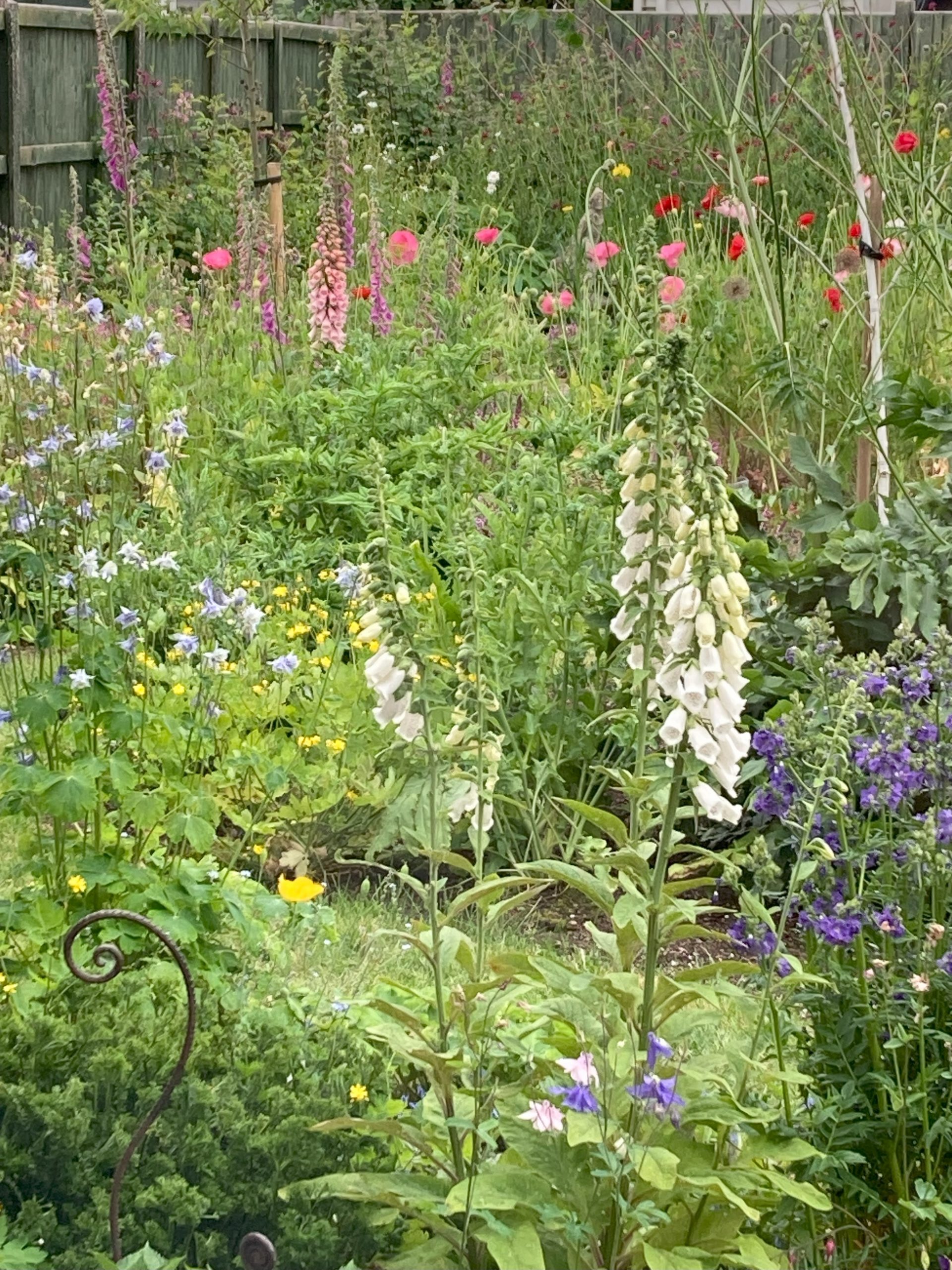
Year 2 of creating my enchanted garden has been magical with many self seeded surprises, the most spectacular of which has been a swathe of long stemmed poppies in various shades of red, pink and white. They appeared in an area in front of the wildlife pond where I must have disturbed the soil. I had plans for this area but I held fire until the autumn so that I could enjoy their full ethereal beauty. Poppys are so delicate and every morning I would go and see the new ones that had opened, knowing full well that they would drop their petals by the next day. I collected the dried seed heads and I have sprinkled them over the back of the garden in the wilder area. Fingers crossed they come up and treat me to another display. Long stemmed poppies can remain viable in the soil for up to 50 years and my poor sandy soil is perfect for them. See my Instagram post for a video of them.
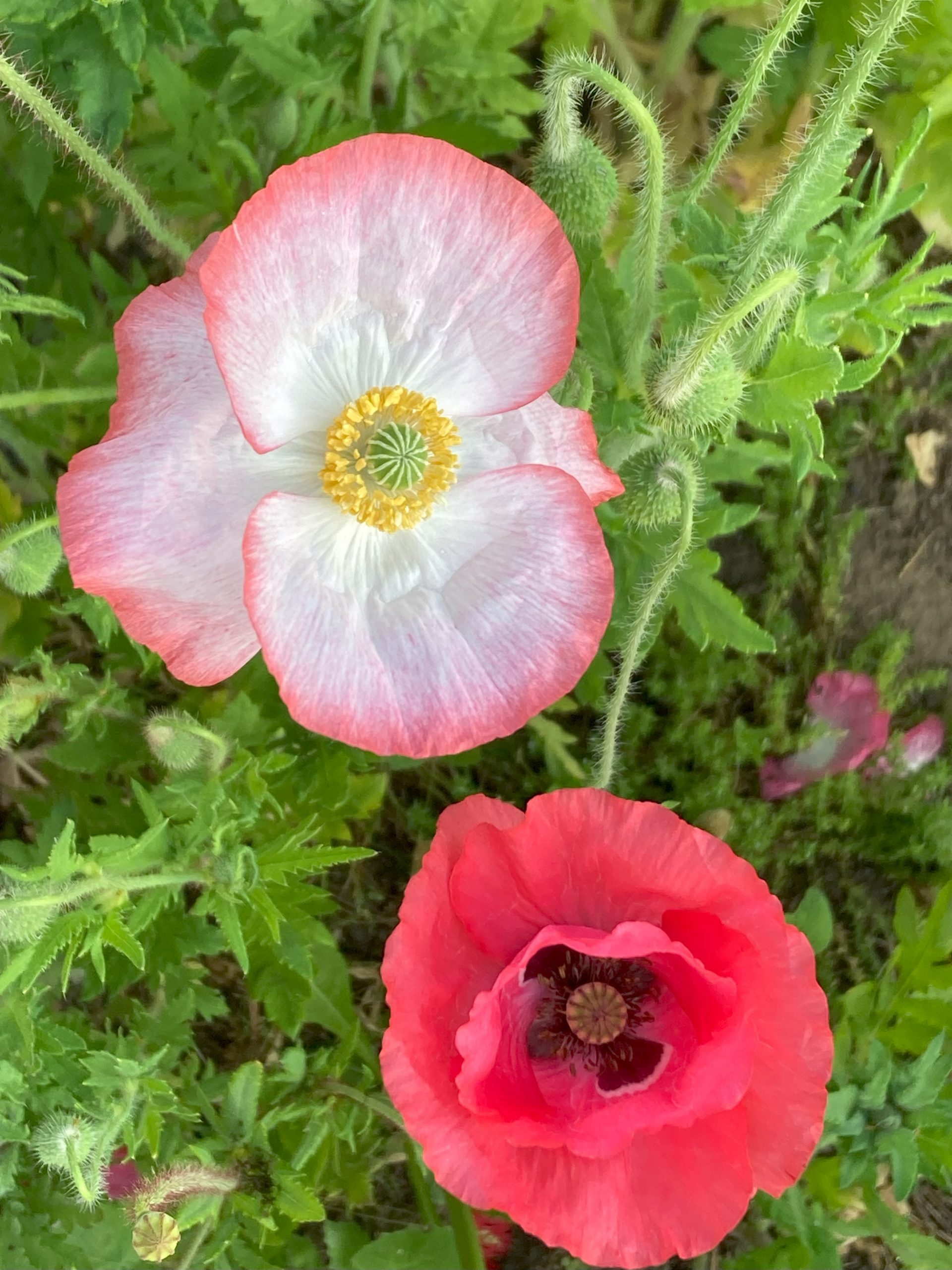
Continuing the theme of wild surprises, a beautiful Corncockle emerged quite late in October (totally out of season!) which I was thrilled to see as bees and other pollinators love it.
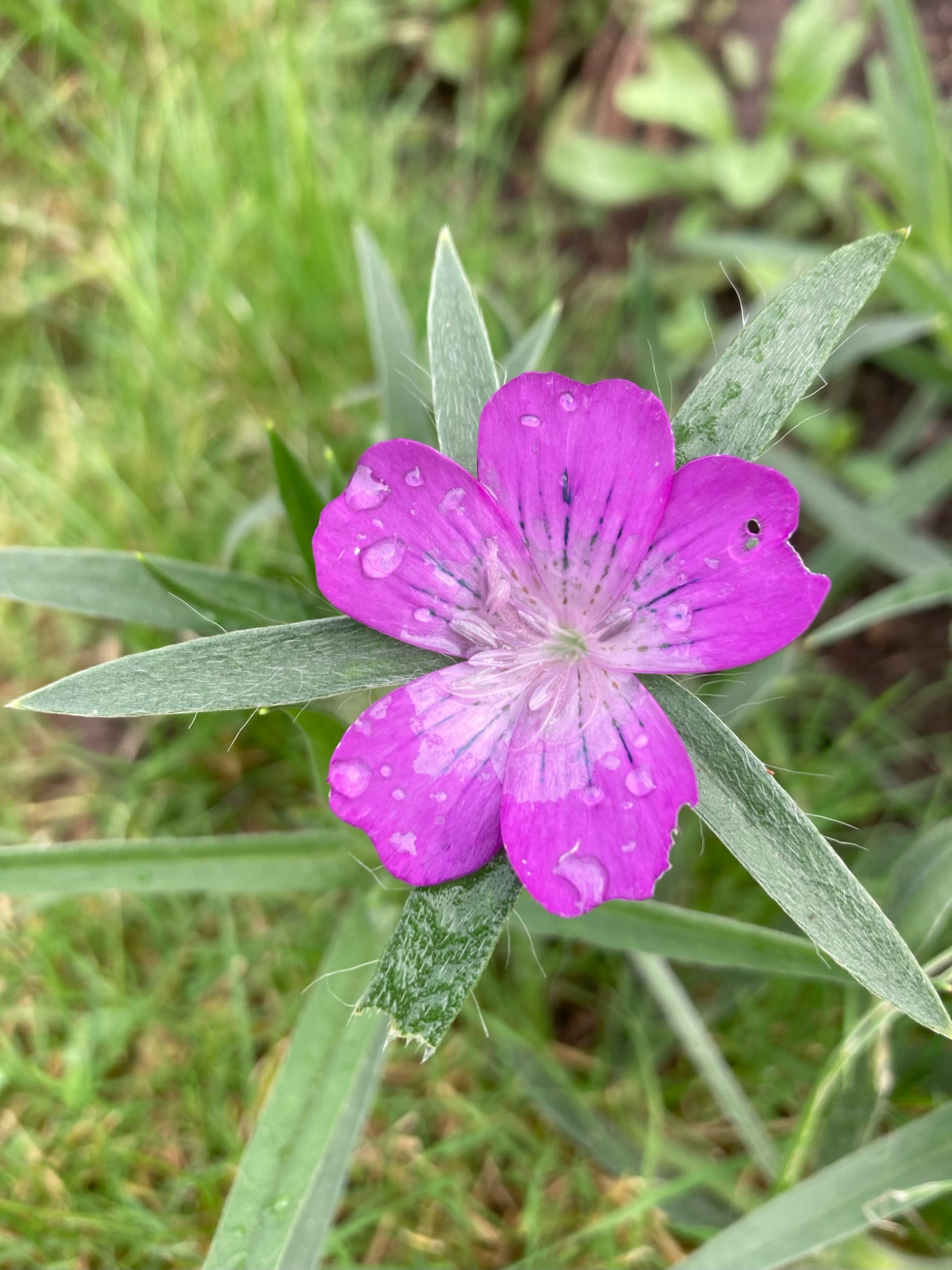
I allowed common ragwort to grow at the back of the garden which was host to numerous orange and black striped Cinnabar caterpillars, the moths of which emerged later, so distinctive with their bright pink hind wings. I do have to admit that I dug some of the ragwort out as I felt it was dominating the other wild flowers but I shall allow it to grow again next year. I strongly feel that the garden has to take the lead and with such a poor sandy soil I do not want to force inappropriate plants upon it. If ragwort pops up, then ragwort it shall be! I also kept the burdock that self seeded from the year before as it is food for the caterpillars of the Painted Lady butterfly and borer moths.
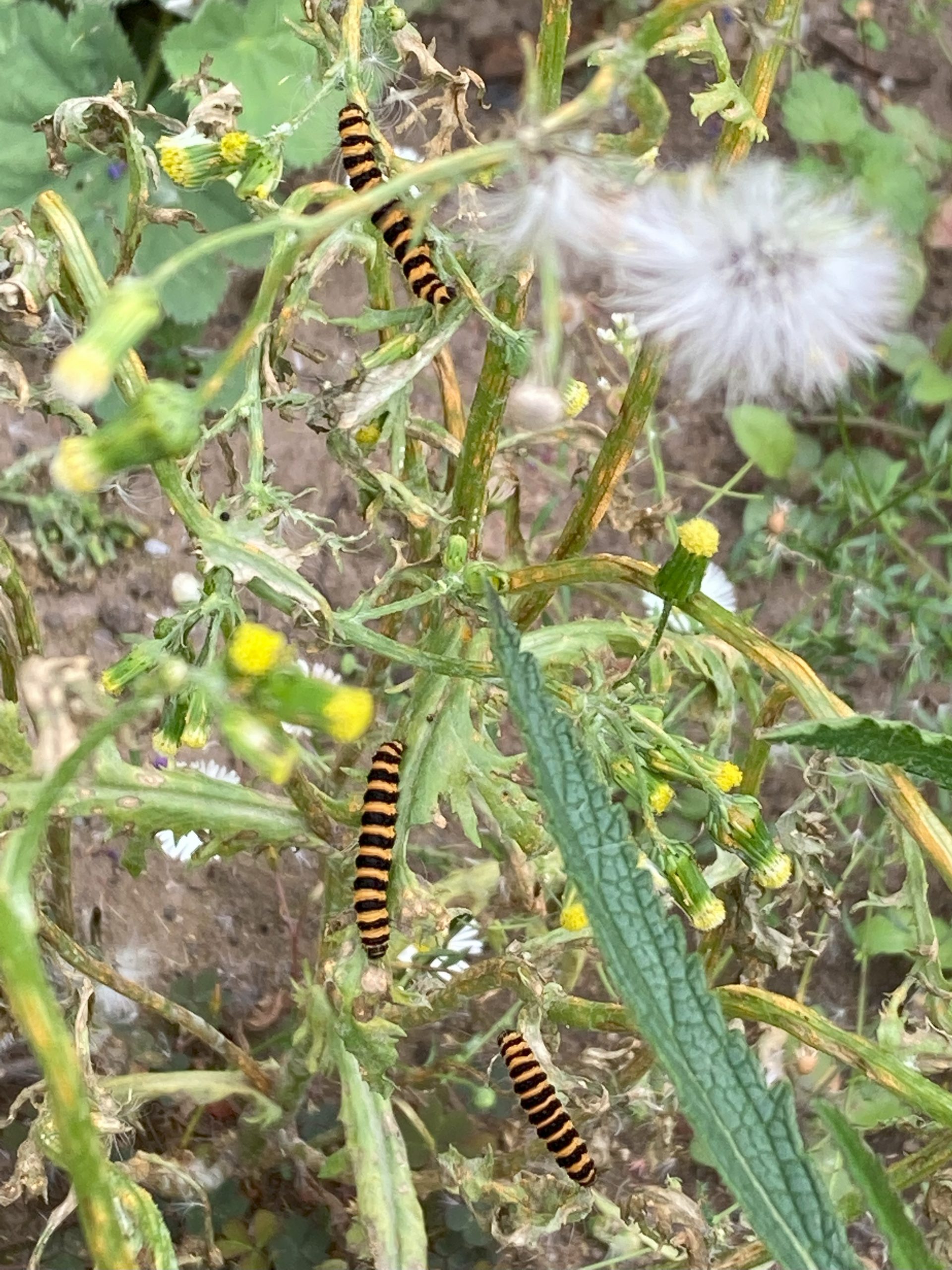
This year I planted more of the geranium Rozanne as it does so well, Echinacea ( many I grew from seed failed), sedum ( flowers later in the year so good for pollinators before they hibernate), Nectaroscordum Siculum/Honey garlic ( dotted along the shadier area of the garden), Anthriscus sylvestris ravens wing( see the blog year 1 garden review) and stipa tenuissima ( I have fallen in love with its mesmerising graceful movement when there is a breeze). I also introduced Perovskia, salvia Amistad, Helenium, Dianthus Carthusianorum /German pink ( for in-between the ravenswing) and malva.
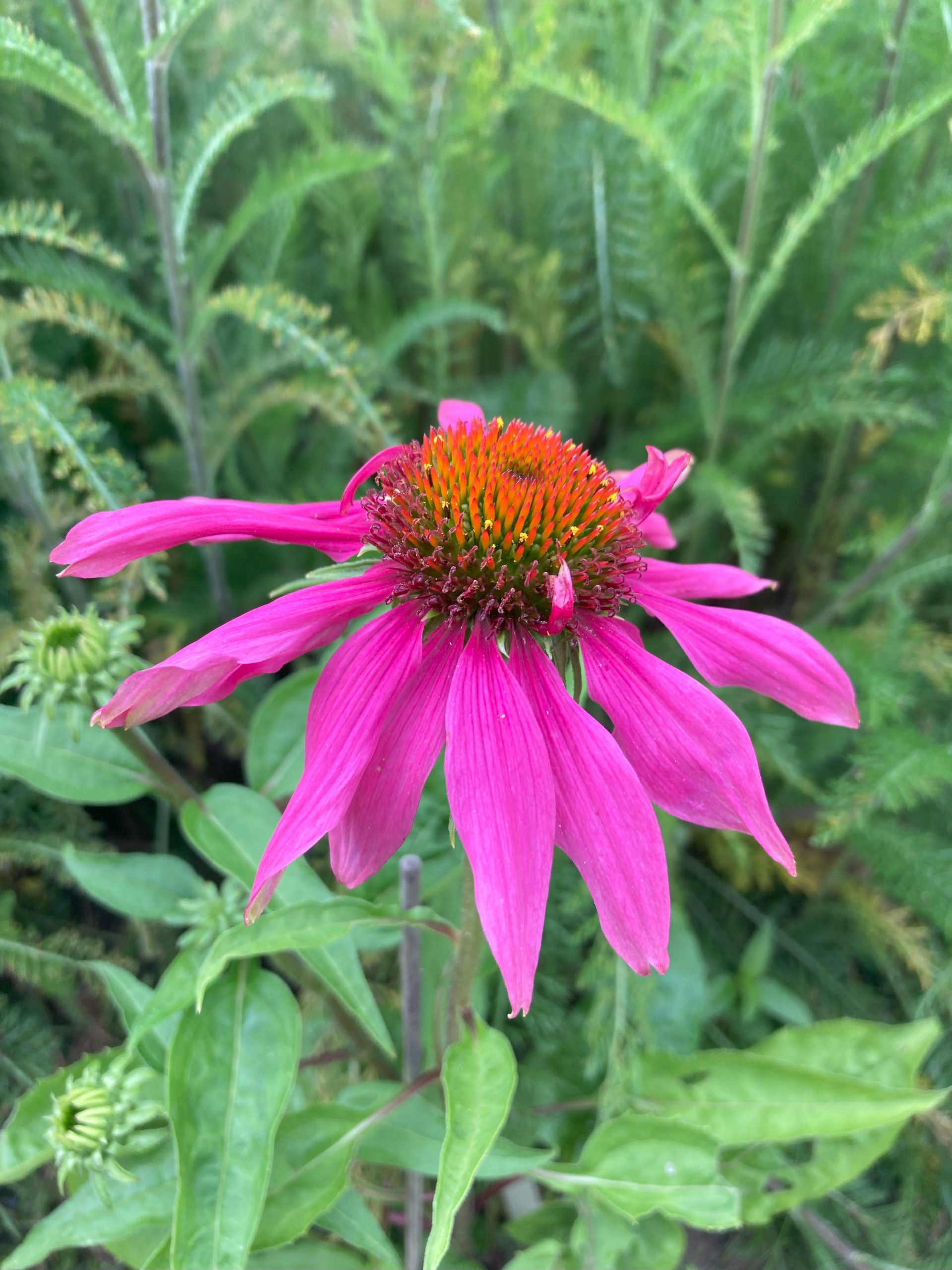
The giant scabious that I grew from seed flowered in spectacular fashion, this being their second year. I have 4 of them dotted around the garden and they make a real statement. The bees and other pollinaters love them as do I.
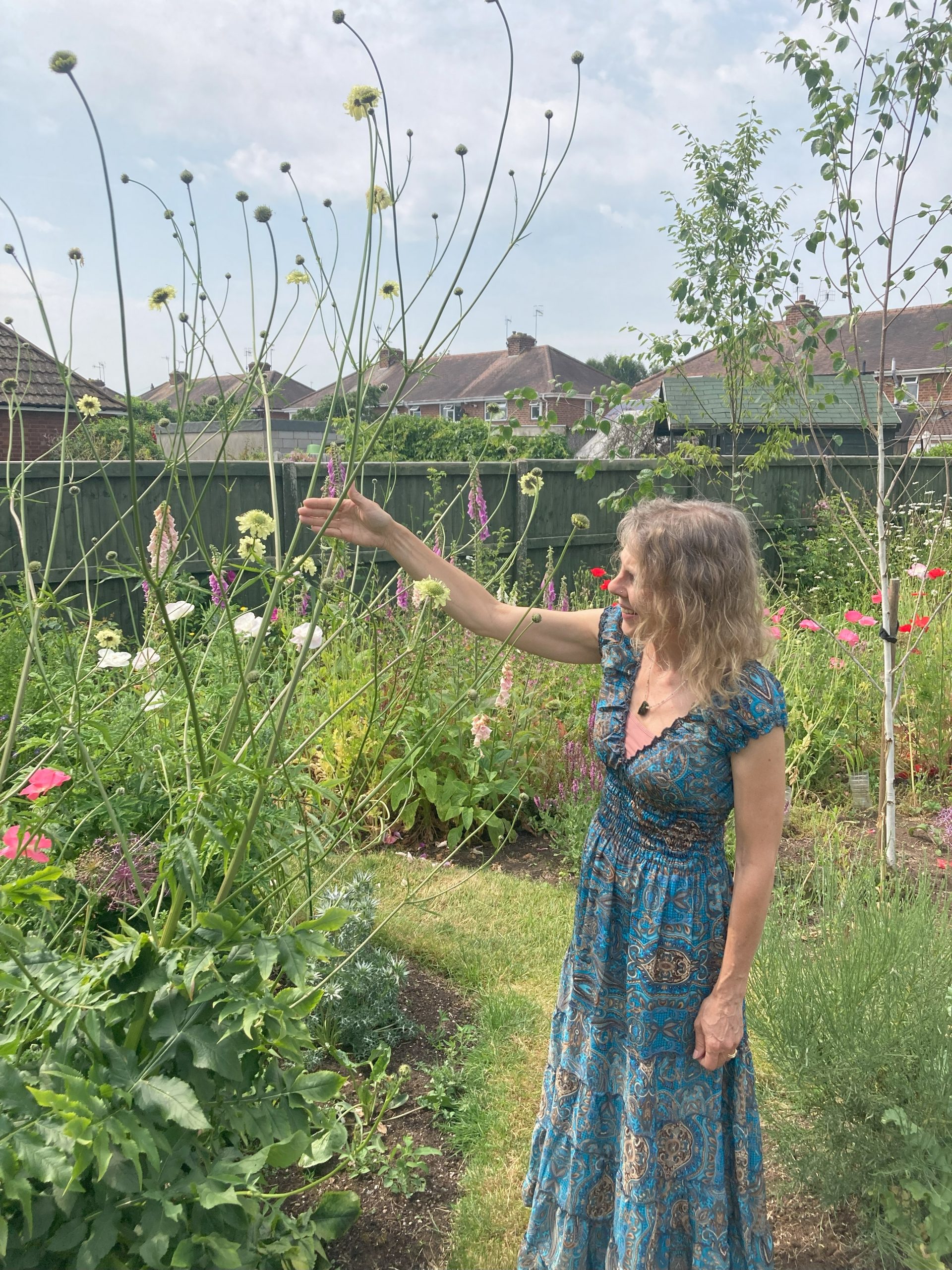
Another plant which I fell in love with, was a white Gaura which I also grew from seed. Its flowers were so ethereal and highlighted the white bark of the silver birch behind them.
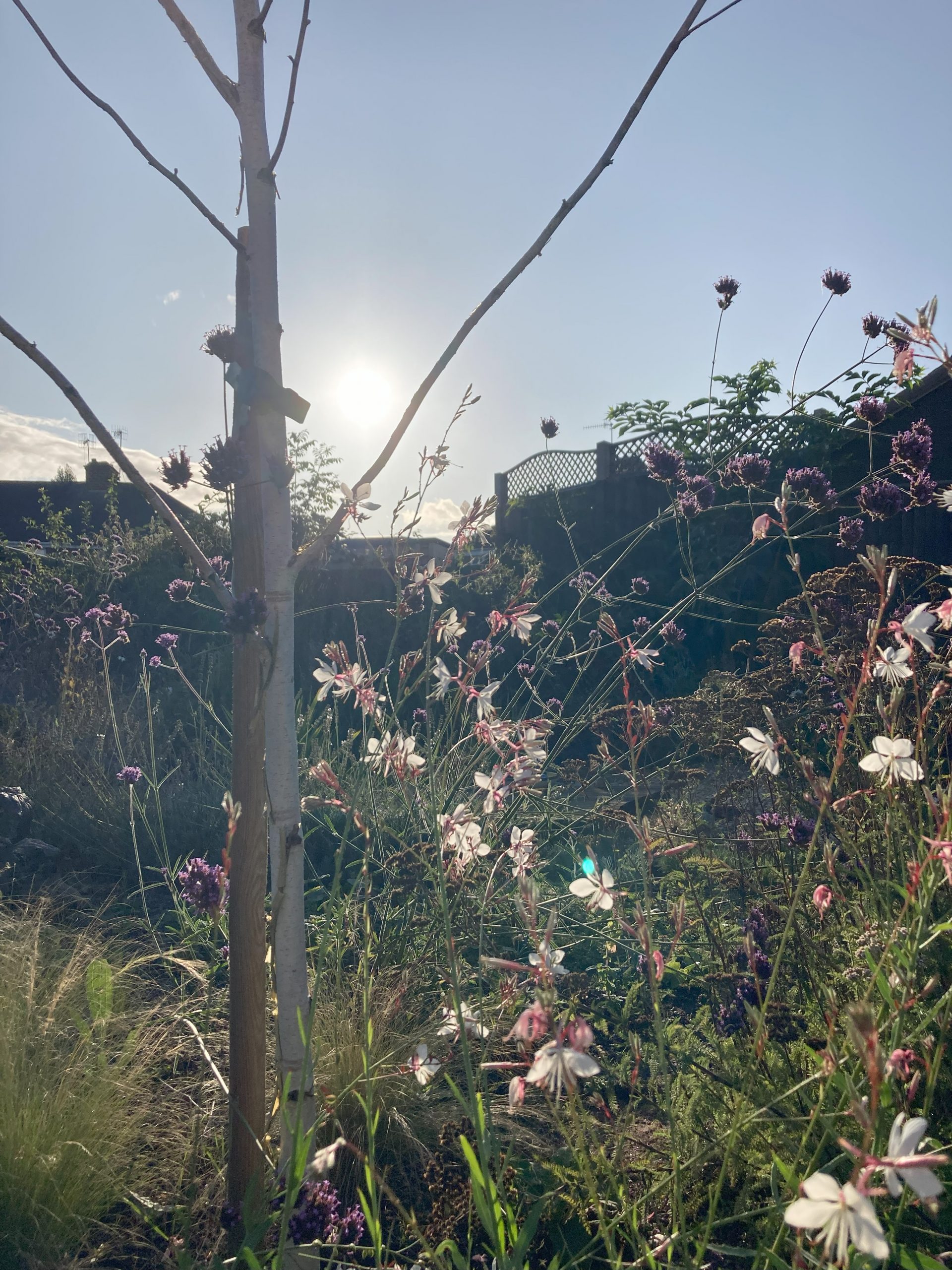
My husband built a pergola and decking and I have planted a rose, jasmine, honeysuckle and a clematis and hope they will grow quickly and provide a green shady canopy which is much needed as we experience full sun for most of the day in this west facing garden.
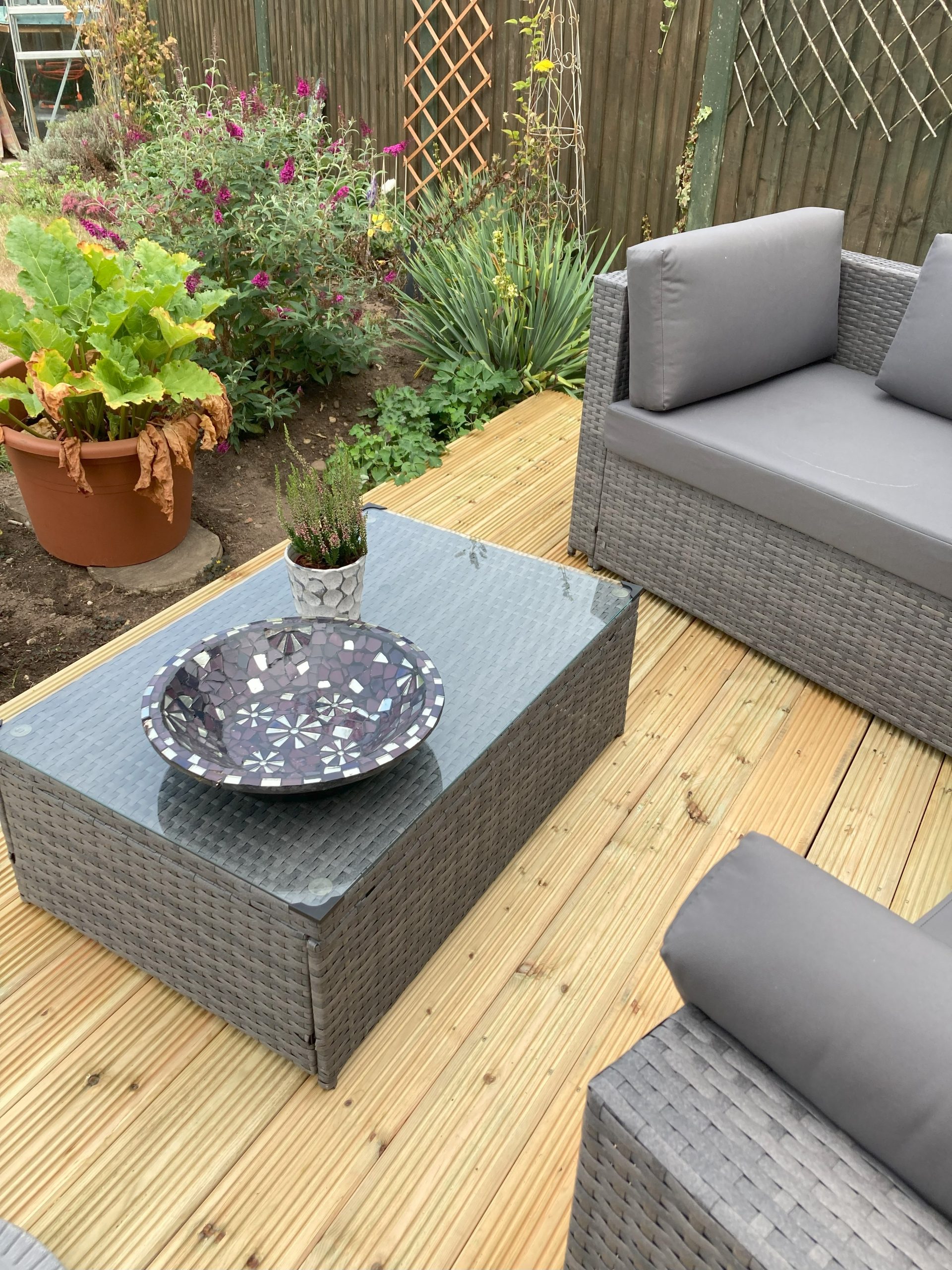
I indulged my love of buddleia by planting two more varieties at the back of the garden, a white variety and a yellow one called Sungold. I also had to replace my dwarf purple variety as it succumbed to the late frost. I was amazed at the number of butterflies visiting my largest buddleia in the summer including Red admiral, Peacock, Tortoiseshell, White and Comma butterflies and so I always made sure I sat near it, to watch this adoration of the flowers. Several buddleia self seeded behind the pond which I am so happy about and I feel this has happened in response to my love for it. Buddleia used to be called the bomb site bush as it was one of the first plants to spring up. It was introduced from China in the 1890’s but has now naturalised.
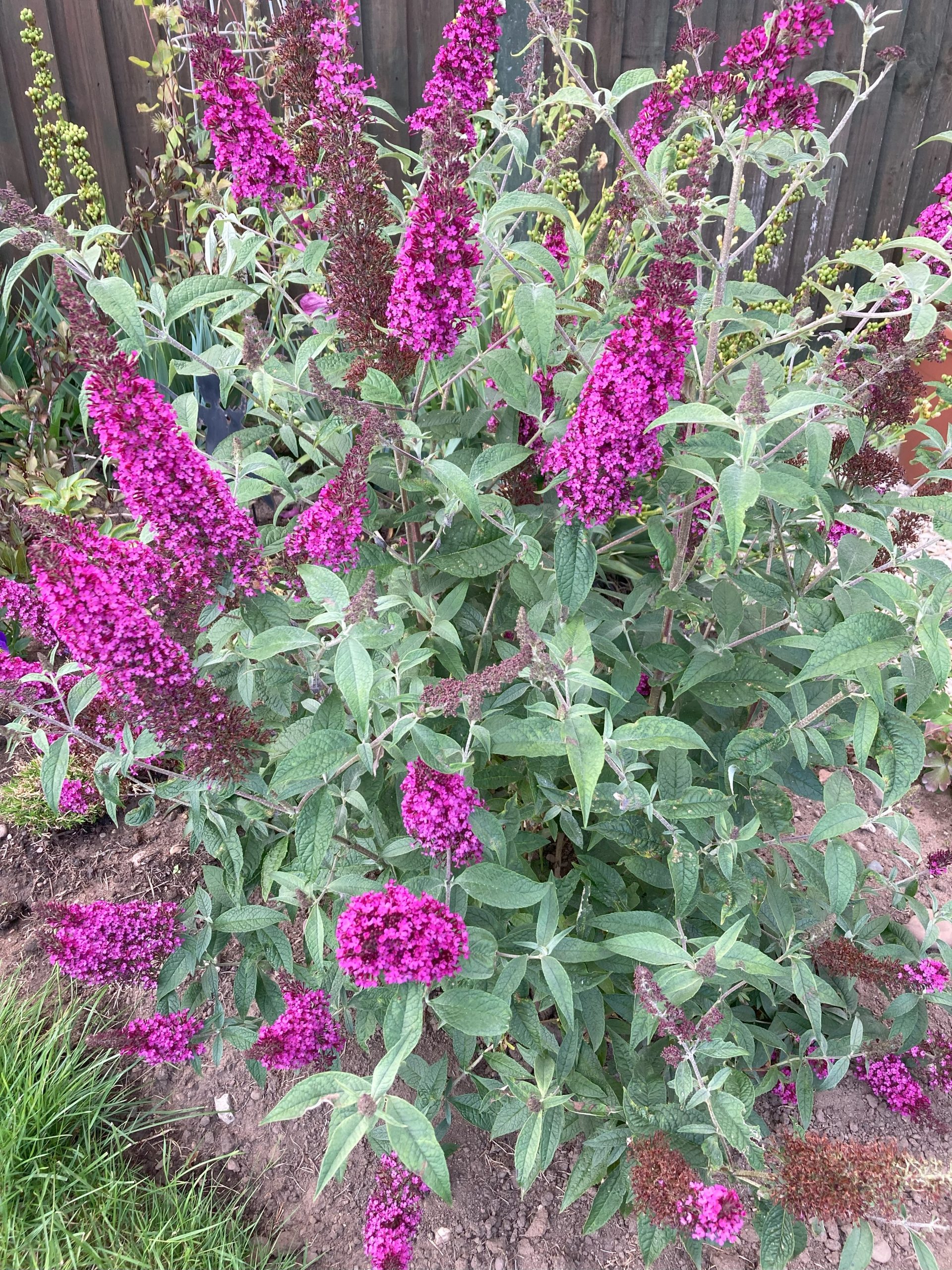
The late frost seemed to lay claim to several plants but I just left them well alone and by early summer they had regenerated. This included a well established salvia bush and a Chilean guava. This has taught me to let nature take its course and be patient. Who knows what nature spirits and fairies are involved in their regeneration process. Speaking of which I am even more convinced that the fae had a hand in a giant sunflower appearing in the flower bed in front of my kitchen window in 2022. This is because I saved the seed from this plant and sowed them the following year and they never grew so big and sturdy as the parent plant. The soil was the same, the sunny aspect was the same but they just didn’t compare in the wow factor! The squirrel that visits my garden had no complaints though, as it feasted on the sunflower seeds performing amazing daredevil acrobats to get to the flower heads.
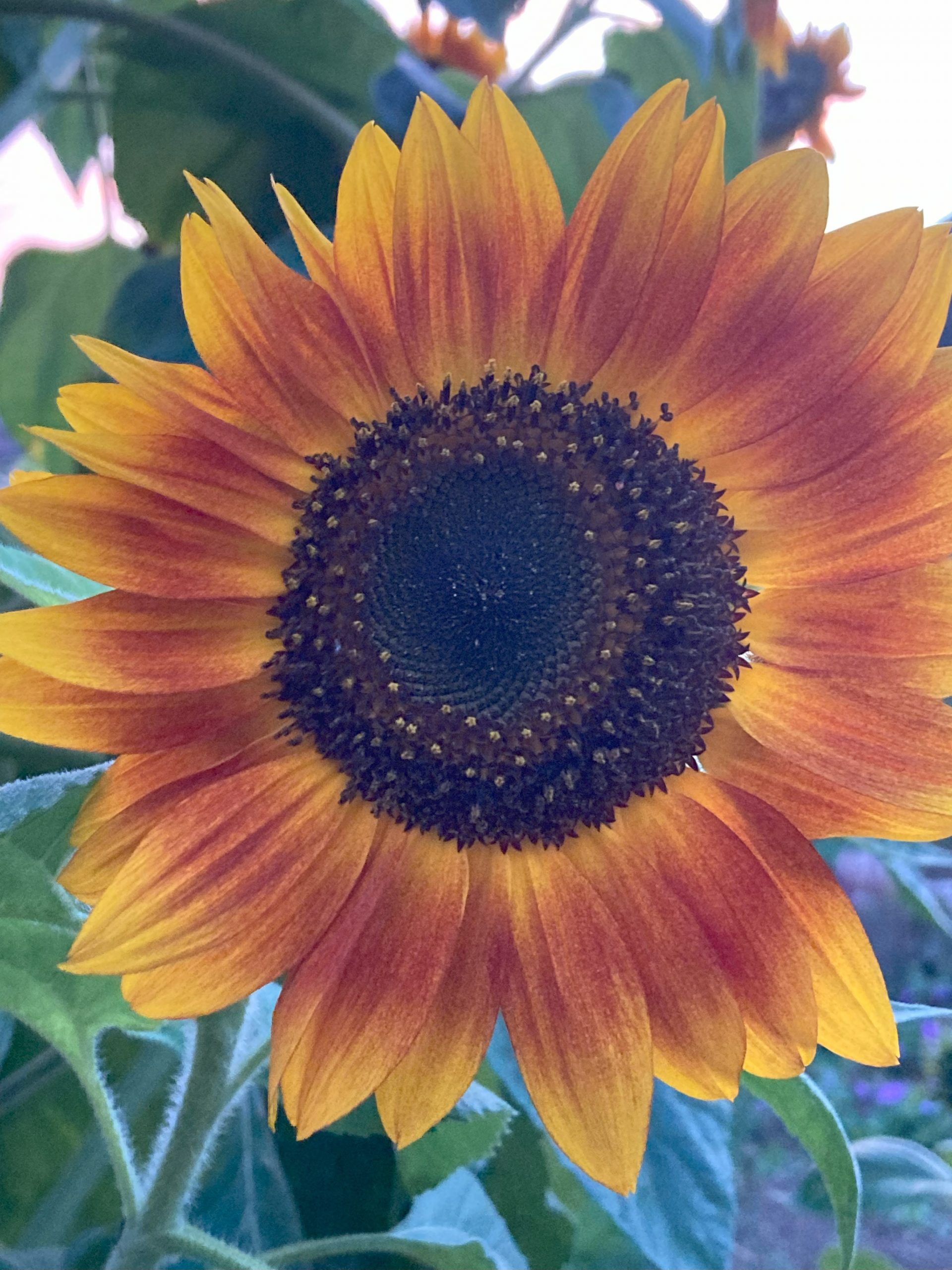
The wildlife pond is now host to many newts and all trace of frogs have disappeared. I am thankful because my cats kept catching the frogs and I was continually rescuing them and passing them over the fence to my neighbour who also has a pond. My cats don’t seem able to catch the newts and for this I am grateful. Wildlife gardens and cats are not very compatible and I often keep the cats in first thing in the morning especially through spring and summer, when the birds are feasting in the garden.
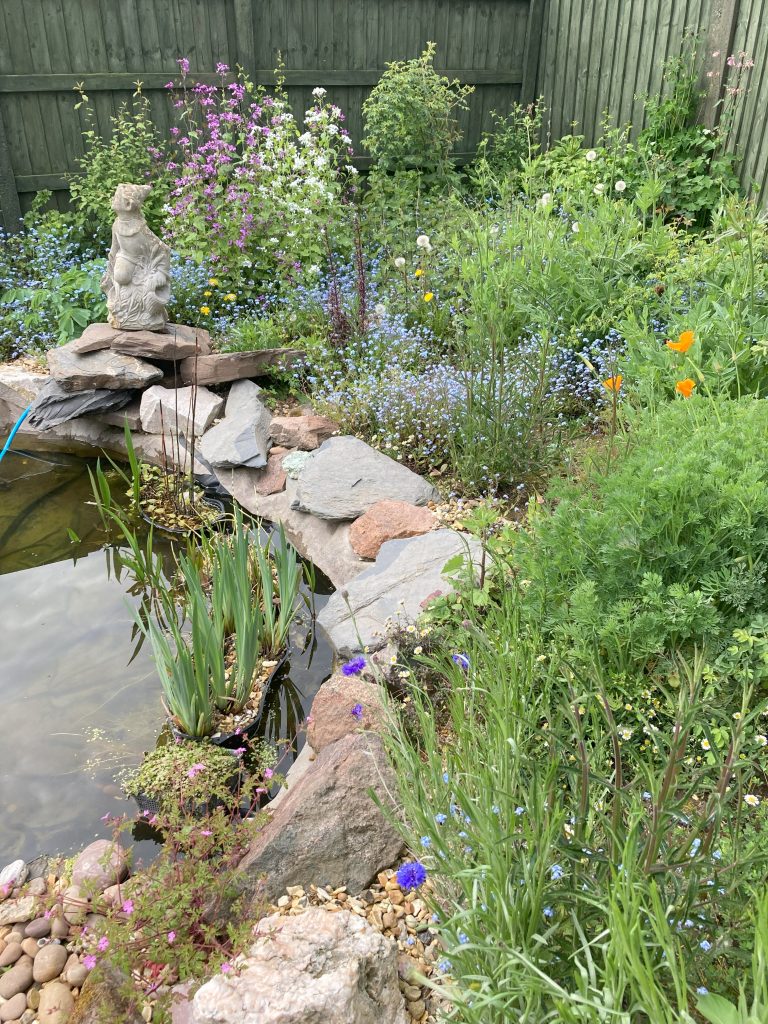
The asters put on an amazing show in the Autumn and some had self seeded in other parts of the garden which I welcome, since they are such an important late source of nectar for bees and other pollinators.
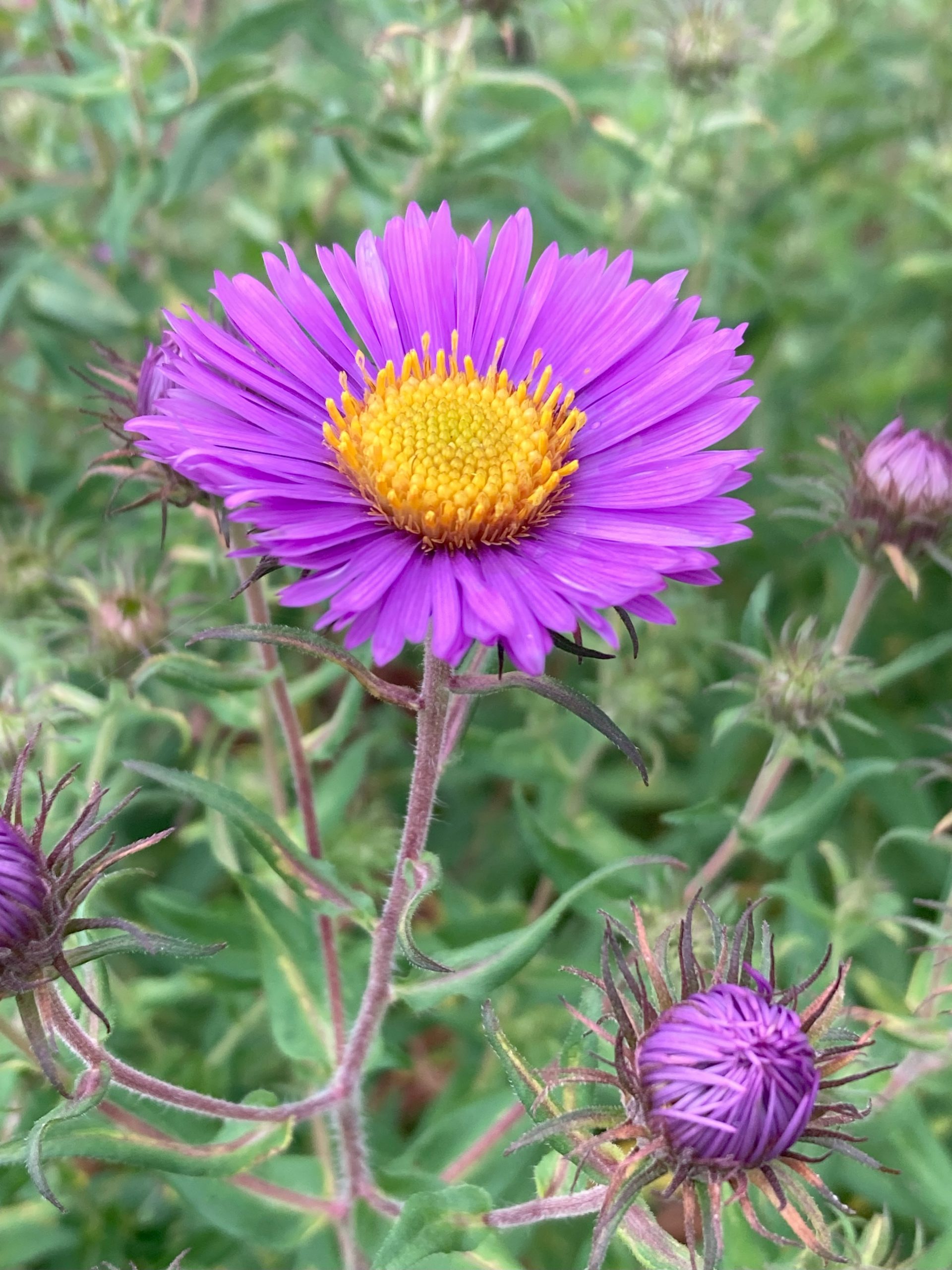
I have 2 faery altars in the garden made from tree stumps and crystals and I moved them to the flower bed round the circular lawn as they were becoming increasingly difficult to access in their original spot as the surrounding plants were establishing themselves. Altars to the fae are dedicated focal points for inviting them into your garden and establishing a relationship with them. Here one can meditate and make offerings.
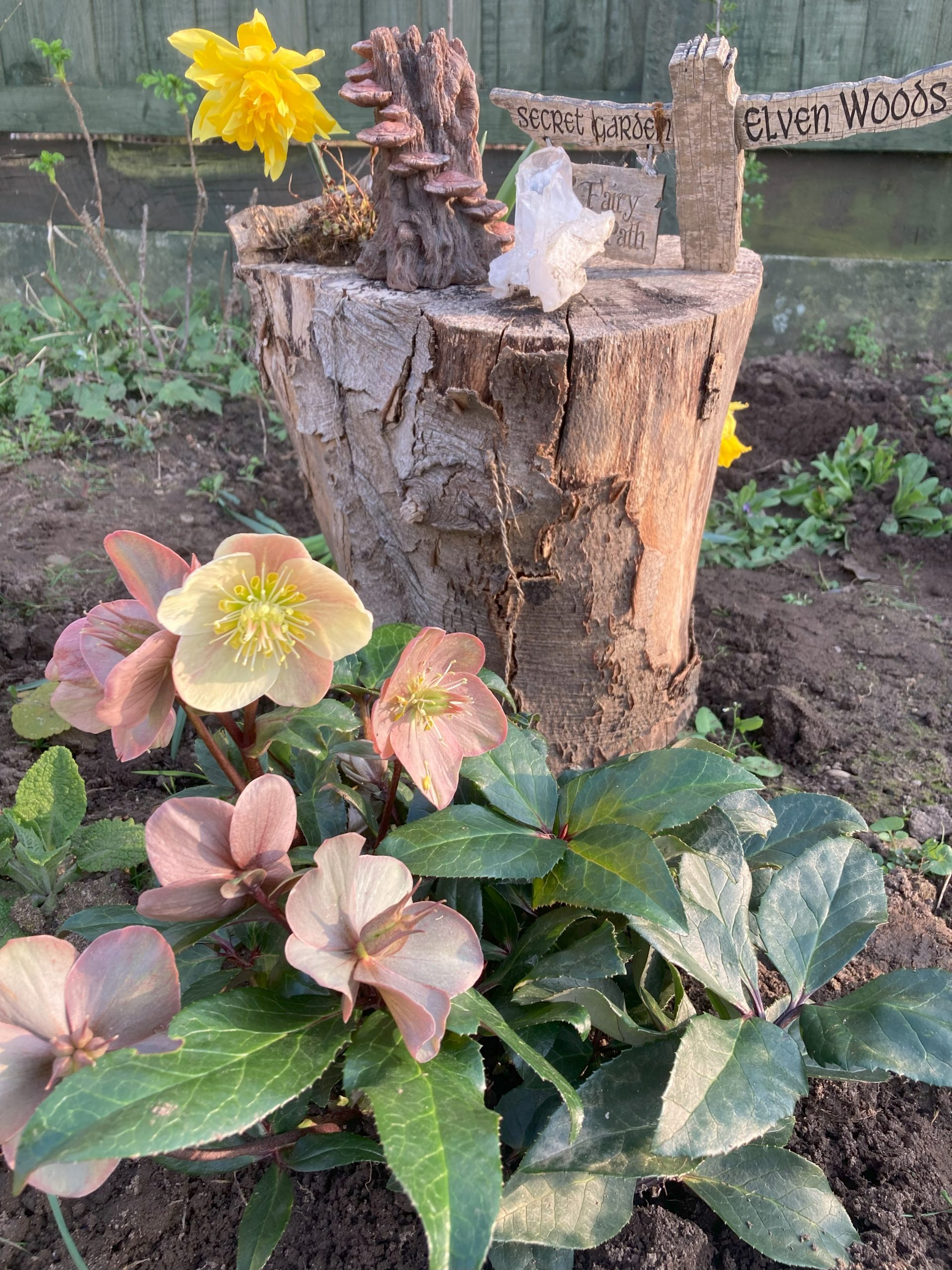
Here are two excerpts from my book The Enchanted Garden, providing more detail.
‘An altar dedicated to the fae can be as simple as a rock with sacred objects upon it or a more elaborate mandala of crystals or natural objects. Let your imagination run free and create something that is beautiful and unique to you. Spirals and circles are natural Mother Earth shapes. The fae love all types of crystals, including amethyst, fluorite, rose and clear quartz. They also love anything beautiful from Mother Nature, such as pretty stones or interestingly shaped pieces of wood, flowers and shells.’
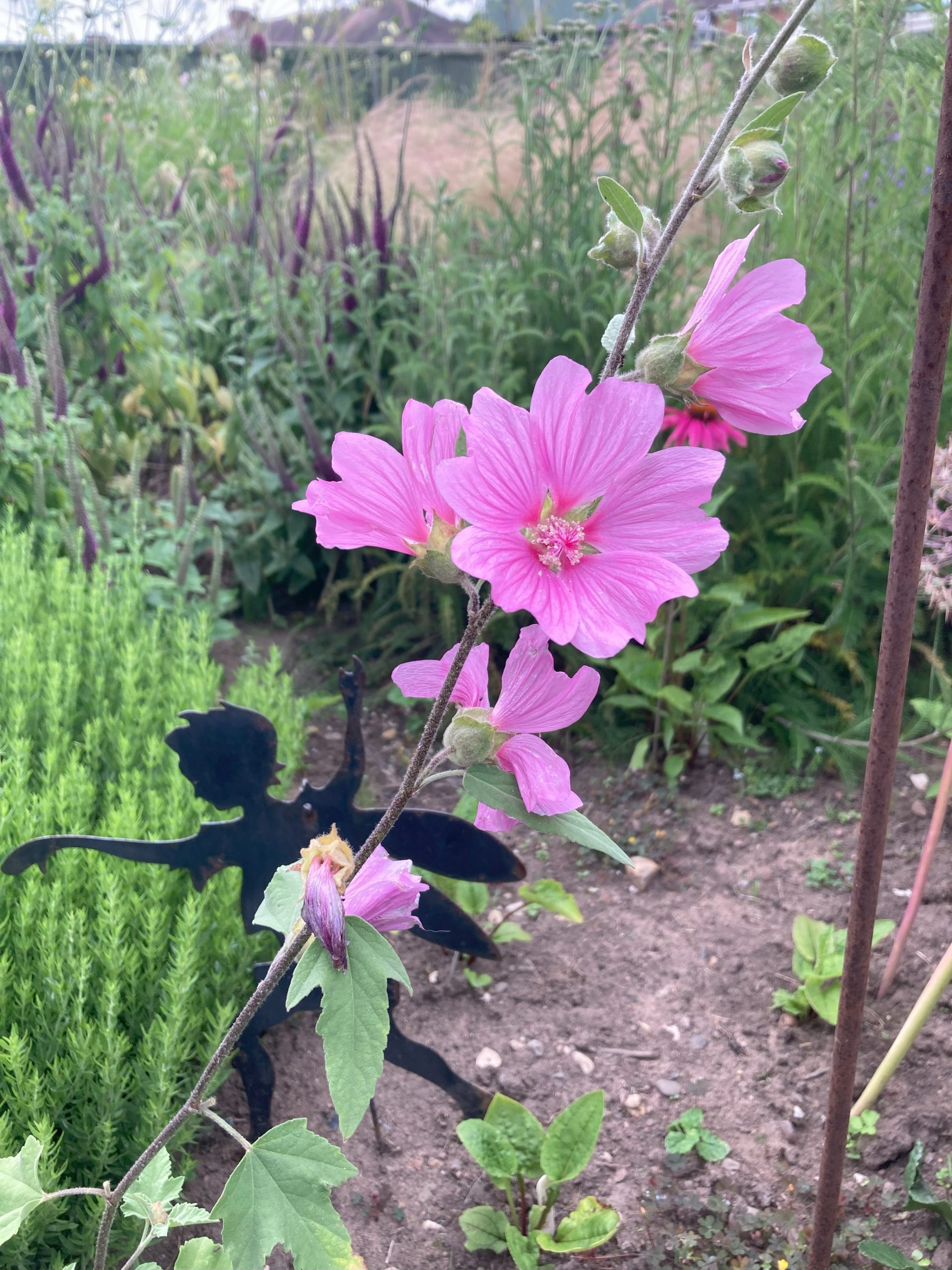
‘There are times during the course of a year where the veils between the worlds are thinner and it becomes much easier to contact the faeries. These are the full and new moons, solstices, four Celtic fire festivals and the equinoxes. Dusk and dawn are also magical times too. Once you have started to commune with faeries in your garden, you may start to get unexpected or out-of-character impulses on how to garden or where to place particular plants. Follow these as they may be nudges from the faery realm, and a stronger connection will be formed if you carry out these ‘ideas’.
Finally I have been creating a ‘garden room’, so called as the glass doors look out onto the garden. It will be botanically themed and I am looking forward to using this space to write from, especially in the sunnier and warmer months. I naturally gravitate to the front of the house and the room with the log burner in the winter!
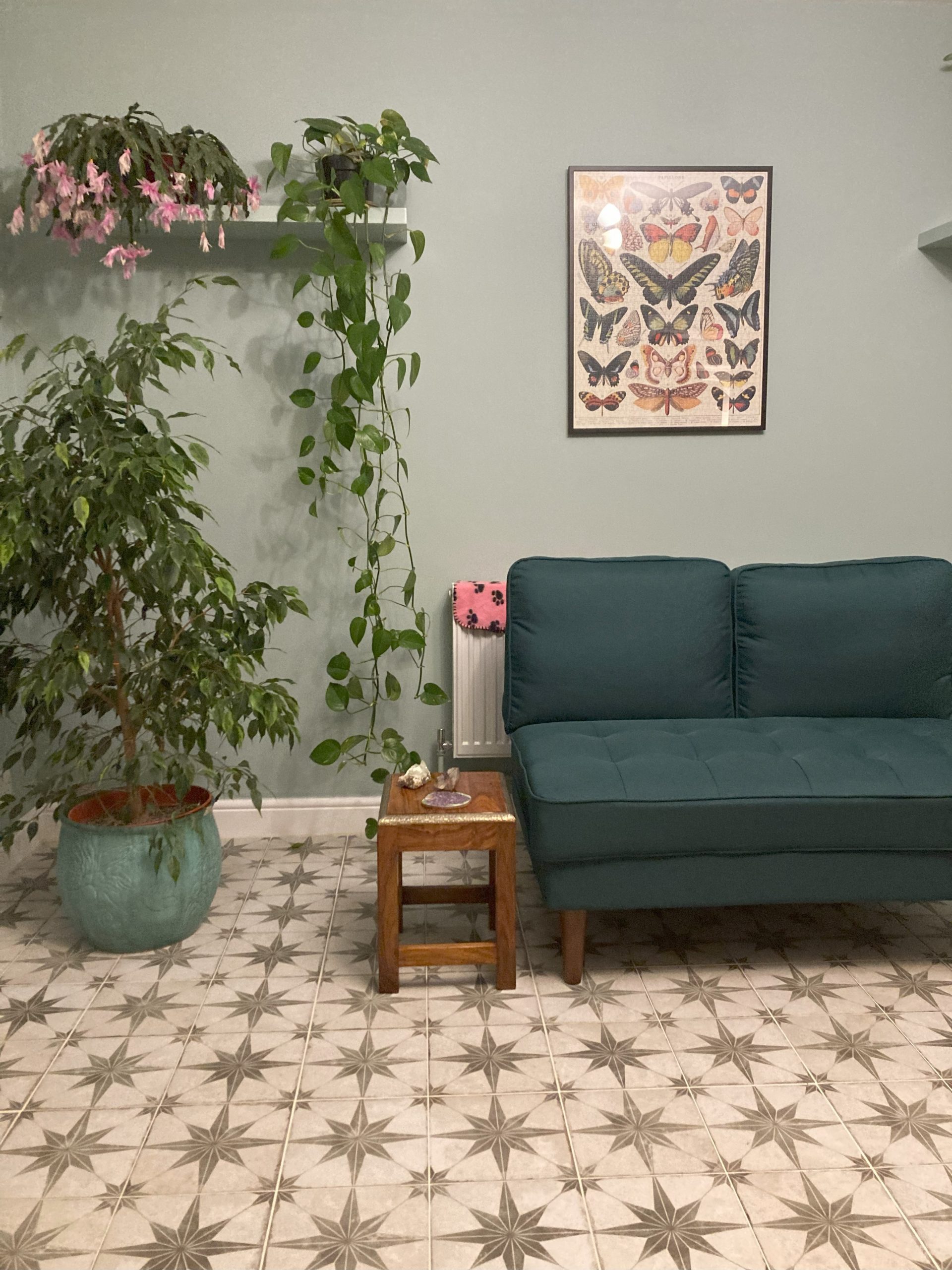
Creating a garden for the wildlife and fae is deeply fulfilling and I can’t wait to see what magic will unfold for year 3 !
Leave a Reply